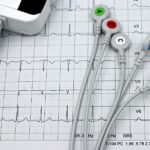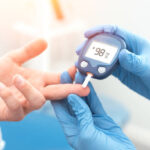Your heart is a remarkable organ that easily pumps blood throughout your body, beating over 100,000 times a day. However, what occurs if your heartbeat is irregular? When the beat is excessively erratic—that is, too fast, too slow? Here’s where a pacemaker gets useful. Small, battery-operated devices called pacemakers aid in keeping the heartbeat regular and healthy. They are practically lifesaving for a lot of folks. A pacemaker can help make sure your heart beats at the proper rate and keep you active and healthy if you have a cardiac rhythm issue.
Let’s explore pacemakers: what they are, how they function, who requires them, and what daily life is like for those with one.
What Are Pacemakers?
A pacemaker is a tiny implanted device that helps control arrhythmias or abnormal heartbeats. It sends electrical pulses to cause your heart to beat at a regular pace and rhythm, particularly when it slows down or stops completely. Consider it your personal heart rhythm controller, making sure your heart continues to circulate blood throughout your body effectively.
Pacemakers may treat bradycardia, a slow heart rhythm, tachycardia, or an irregular heartbeat that prevents the heart’s chambers from pumping blood properly. People who suffer from illnesses where adequate blood flow is impeded, such as heart failure or heart attacks, are frequently advised to use these devices.
How Do Pacemakers Work?
Electrical impulses that originate in the sinoatrial node, a collection of cells in the heart’s upper right chamber (atrium), power your heart. Your heart contracts due to these impulses passing through it, pumping blood. If an electrical system malfunctions, your heart may beat abnormally quickly, too slowly, or erratically.
When necessary, a pacemaker delivers short electrical pulses and monitors the electrical activity of your heart. One to three leads are inserted inside your heart, along with a pulse generator that houses a tiny microprocessor and battery. The pacemaker sends out an electrical impulse to help control the heart’s rhythm when it detects a problem, such as an abnormally slow beating.
Depending on the type of pacemaker and the patient’s condition, it can be programmed to target specific areas of the heart—whether it’s just one chamber or multiple chambers.
Who Needs a Pacemaker?
The most common cause of pacemaker implantation is bradycardia, a condition in which the heart beats too slowly and causes weariness, dizziness, and fainting. Bradycardia may result from an adverse cardiac event, age, or certain drugs. However, there are other reasons why a person could require a pacemaker.
A pacemaker might be necessary if you have:
- Bradycardia: An excessively sluggish heartbeat that might result in symptoms like weariness or fainting.
- Heart block: An interruption in the heart’s electrical signal flow.
- Tachycardia: An excessively rapid heartbeat that may also need medical attention.
- Congestive heart failure: An ineffective heart pump caused by weakening heart muscle.
Hypertrophic cardiomyopathy: a disorder that impairs normal blood flow by thickening the heart muscle.
A pacemaker can also be beneficial after heart surgery or a heart transplant or if you have congenital cardiac abnormalities that result in irregular heart rhythms. Many people of all ages benefit from pacemakers, including those who must continue taking certain medications like beta blockers, which can cause the heart to slow down excessively. Pacemakers are not just for the elderly or those with serious heart issues.
Before Getting a Pacemaker
If your physician thinks you might benefit from a pacemaker, they will undertake several tests to ensure your heart rhythm is irregular and to choose the right kind of pacemaker for you. These tests could involve a Holter monitor, which records your heartbeat over a 24- to 48-hour period, or an electrocardiogram (ECG), which measures the electrical activity of your heart.
After your doctor certifies that a pacemaker operation is necessary, you’ll be given a date. Most pacemaker procedures are performed under local anaesthetic, which means that although you will be awake, the pacemaker site will not hurt.
What to Expect During Pacemaker Surgery
Most pacemaker insertion procedures are outpatient, so you can usually return home the same day. The pacemaker’s leads are inserted into your heart through a vein positioned slightly beneath the skin close to your collarbone. The pacemaker is inserted and checked to ensure it functions properly and the wound is closed.
The recovery period after the procedure is usually brief, often just a few hours. Most people recover from incisions in a few days, though you might experience some stiffness there.
After Getting a Pacemaker
Following the pacemaker’s implantation, your doctor will schedule routine check-ups to ensure everything is working well and make any required modifications. Most pacemakers may be remotely checked, sparing you from having to go in person frequently.
Most of your activities can usually be resumed during the initial healing period. However, you might need to refrain from heavy lifting or vigorous activity for a few weeks. Electronic gadgets should also be used cautiously since they may interfere with your pacemaker. For instance, you should avoid powerful electromagnetic fields and big magnets, such as those in industrial or MRI machines.
You must always have your pacemaker ID card on you, particularly while visiting new doctors or passing through airport security. This card lists the type of pacemaker you currently have and the emergency contact information for your physician.
Living With a Pacemaker
The majority of pacemaker users go on to have active, fulfilling lives. Contemporary pacemakers are made to adjust to your activity level, raising your heart rate during physical exertion and lowering it during rest. You’ll need to go for routine checks to ensure your pacemaker is operating well and to keep an eye on the battery, which usually lasts five to fifteen years.
Although having a pacemaker requires some lifestyle modifications, these changes don’t have to be restrictive. You can continue to travel, work out, and enjoy life as usual, but with a little extra peace of mind, knowing that your heart gets the support it needs.
Conclusion
Pacemakers are fantastic treatments for irregular heartbeats. For many, these tiny gadgets can enhance their quality of life and return their hearts to regular rhythms. If you have heart failure, bradycardia, or any other cardiac problem, a pacemaker can give your heart a constant beat to keep you going.
Don’t wait if you’ve been having issues with your heart’s rhythm or if a pacemaker has been prescribed. Talk to your physician about how getting a pacemaker could help you resume your favourite hobbies and improve your heart health. A tiny gadget could be all it takes to have a healthier heartbeat!











